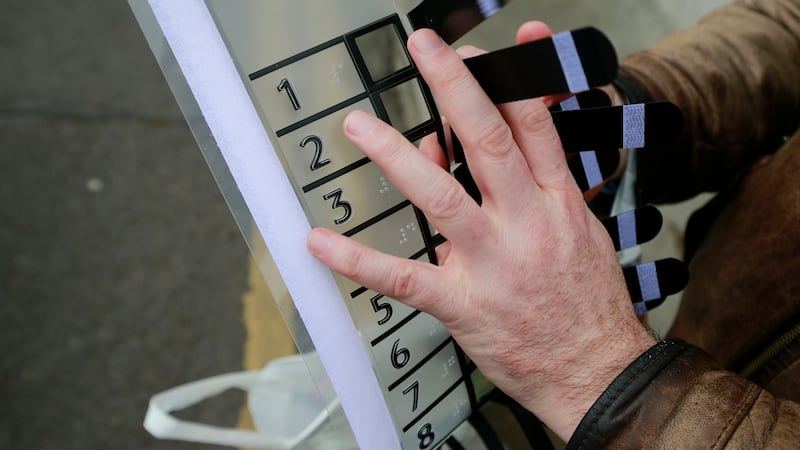There was some consternation when Robbie Sinnott went to cast his vote in Dublin 8 on Friday. What should have been a simple process involved a long search by polling station officials for a phone number, and an impromptu intervention with a pair of scissors.
Mr Sinnott is blind and, like thousands of other blind or visually impaired people across the State, he was handed a numbered plastic template in the polling station. He was supposed to align it with the ballot papers he was given so he could more easily identify all the candidates running for the local council and European elections. He was given a separate template to help him vote Yes or No in the divorce referendum.
But the election template had 20 numbers on it, despite there being only 19 candidates running in the European poll and only 11 in the local election. This meant alignment of the two was not easy.
As one template was cut down to size with scissors for Mr Sinnott’s local election ballot, he had to request help to find a freephone number so he could identify the candidates on the European paper. He had been able to find the number for the local candidates.
Polling station staff also struggled to find it – first going through a manual and then phoning the franchise unit of the Department of Local Government to track it down.
The idea behind the freephone number is that people with a disability can call it to hear a list of the candidates running in their area.

‘Potential for abuse’
However, the menu-driven phone system for the local elections was hugely complicated, with the messages delivered in Irish and in English. When Mr Sinnott eventually got to the list of candidates running in his local area, they were not numbered.
That meant matching what he was hearing on the phone to the template he was provided, and the help of the presiding officer or a trusted friend was needed to get through the process.
“There is just so much potential for abuse if you have to rely on a so-called trusted friend or an election official before you can vote,” he says. “How can I be sure they have voted as I have instructed them to? I have to take their word for it.”
Mr Sinnott said the plastic templates were useful but when the ballot paper is long and the voting booth narrow, it was difficult to manage them both.
“The blind voter must keep the template flat for it to work and the benches in the polling booths are far too small,” he said. “I have been given the option of using the table where the ballot boxes sit but then it is not really a secret ballot. If anything I become something of a spectacle.”
He said the phone system was excessively complicated.
"You might want to give your number-one vote to the candidate who is numbered 19 and while you're trying to do that phone is giving you a different number for a different candidate. You'd have to be a member of Mensa to work out how to vote," he added.
Mr Sinnott has long campaigned for equal rights for blind people and won a legal action against the State forcing it to implement procedures which would make it easier for the blind and vision-impaired to vote.
However, he feels the “half-baked system” that is now in place is “unworkable”.
He has made suggestions, including the introduction of easels which would allow the templates to be easily fixed in place and believes the phone system should be supplemented with information sent via email which would be accessible from everyday touchscreen devices which use screen-reading technology.














